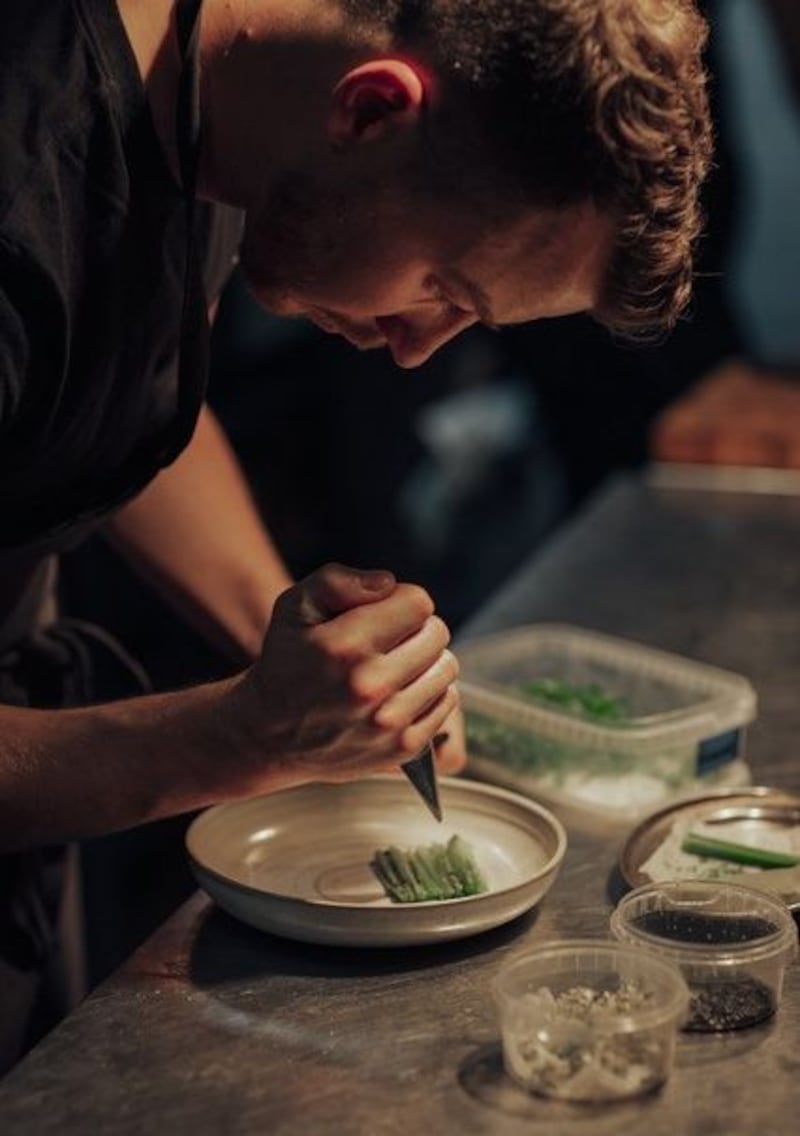“It’s almost overwhelming,” Cúán Greene says about the response to his offer to help Irish fruit and vegetable producers preserve their crop surpluses, and have something to store and sell, rather than have them go to waste.
Greene, who is head chef at Bastible in Dublin, learned about the various methods of preserving when he worked at Noma, in Copenhagen, and he is keen to share his knowledge. "Fermentation is something I do every day, at home and in the restaurant. It makes cooking so much more exciting for me."
Yesterday, Greene posted images on social media of Kilner jars full of rhubarb he has fermented for Ryan's Rhubarb, a fourth-generation family business in Oldtown, Co Dublin, with an offer to help other growers do the same.
You're basically converting the natural sugars in the rhubarb to lactic acid, which is a natural preservative. Simply put, you pour a salt brine on top of washed rhubarb, add a few aromatics and close up the jar
The response was immediate, and has already forced Greene to rethink his initiative. He says his first though was that “it’s a simple process where I take surplus raw ingredients and preserve them before giving it back to the farm so they can sell it later on in the year.” But now he plans to teach growers how to preserve fruit and vegetables themselves. “It’s aimed at getting growers to develop this concept,” he says.
“I love forced rhubarb, so I got in touch with Ryan’s and asked if they had any issues with surplus, and if they’d be interested in learning about fermentation. Aoife and Derek Ryan got on board, ordered the jars, and delivered 20kg of rhubarb to my doorstep.”
Greene transformed the vegetable – and it is one, he points out, rather than a fruit – into 18 large, 2kg-capacity Kilner jars full of produce that can now be stored in the farm’s refrigeration unit, and sold later.
“I used a process called lactofermentation. You’re basically converting the natural sugars in the rhubarb to lactic acid, which is a natural preservative. Simply put, you pour a salt brine on top of washed rhubarb, add a few aromatics and close up the jar. I added fresh bay leaf, which I picked wild, some black peppercorns and a little bit of cardamom. They’re going to ferment now for three to four days, then they’ll go to the fridge.”
In addition to giving fruit and vegetable growers a way to deal with seasonal gluts, and perhaps even add value to crops, the process is appealing to growing numbers of consumers. Preserving is a useful way of avoiding food waste, and enthusiasts are turning to pickling and fermenting.

Quick cucumber, carrot or red-onion pickles can be made in minutes and are ready to eat almost immediately. Dissolve four tablespoons of caster sugar in four tablespoons of cider vinegar, add a teaspoon of salt, a cucumber and a shallot, both thinly sliced, and you’ve got pickle ready to eat in a couple of hours.
Fermentation takes a bit longer, and results in more complex flavours. “It’s not for everyone straight away – you need to acclimatise your palate to those type of flavours,” Greene says. He recommends reading The Noma Guide to Fermentation, by Rene Redzepi and David Zilber, or The Art of Fermentation, by Sandor Ellix Katz, for guidance, or researching lactofermentation online.
Greene also plans to post some recipes and a video on social media. “People at home can do this too. It’s not just for chefs or growers, especially now, when people have more time and maybe they’ve got a bit sick of baking.”


















